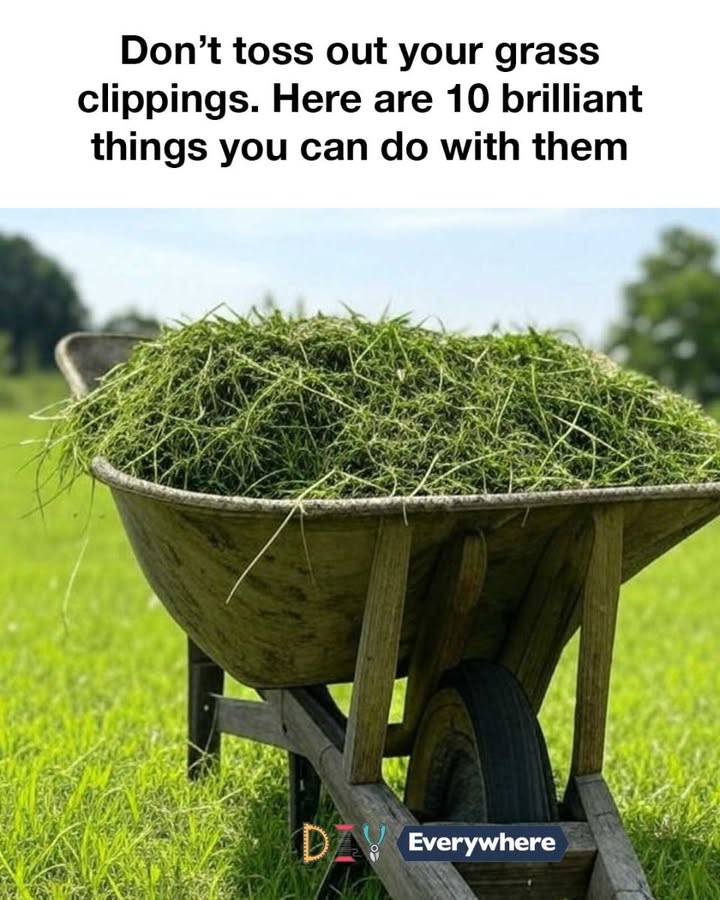cMorgan Reed
Contributing Writer
Grass clippings are often seen as a byproduct of lawn maintenance, but they are actually a valuable resource that can be utilized in various ways. Instead of discarding them, you can repurpose grass clippings to enhance your garden, improve soil health, and even support local wildlife.
By understanding the potential uses of grass clippings, you can reduce waste and contribute to a more sustainable environment. This article explores ten innovative ways to make the most of your grass clippings, turning what might be considered waste into a beneficial resource.
Understanding the Nutritional Value of Grass Clippings
Grass clippings are rich in nutrients that are beneficial for your garden. They contain nitrogen, phosphorus, and potassium, which are essential for plant growth. Nitrogen, in particular, is a critical component of chlorophyll, the compound that allows plants to photosynthesize. By utilizing grass clippings, you can return these nutrients to the soil, promoting healthier plant growth and reducing the need for synthetic fertilizers. Furthermore, grass clippings decompose quickly, making them an efficient way to recycle nutrients back into your garden ecosystem.
Using Grass Clippings as a Natural Mulch
One of the simplest ways to use grass clippings is as a natural mulch. Mulching with grass clippings helps retain soil moisture, suppress weeds, and regulate soil temperature. To use grass clippings as mulch, spread a thin layer around your plants, being careful not to smother them. This layer will decompose over time, adding organic matter to the soil and improving its structure. Grass clippings are particularly effective as mulch in vegetable gardens and flower beds, where they can provide a steady supply of nutrients as they break down.
Composting Grass Clippings for Rich Soil
Grass clippings are an excellent addition to your compost pile, providing a rich source of nitrogen that helps speed up the decomposition process. When composting grass clippings, it’s important to mix them with carbon-rich materials like dried leaves, straw, or shredded paper to maintain a balanced compost pile. This combination of green and brown materials creates an ideal environment for microorganisms to thrive, resulting in nutrient-rich compost that can be used to enrich your garden soil. Regularly turning your compost pile will ensure even decomposition and prevent odors.
Creating Liquid Fertilizer from Grass Clippings
Grass clippings can be transformed into a nutrient-rich liquid fertilizer, also known as grass clipping tea. To make this fertilizer, fill a bucket with fresh grass clippings and cover them with water. Allow the mixture to steep for a few days, stirring occasionally. Once the tea has developed a dark color, strain out the solids and dilute the liquid with water. This homemade fertilizer can be applied to your garden plants, providing them with a quick boost of nutrients. Grass clipping tea is particularly beneficial for leafy greens and other nitrogen-loving plants.
Improving Lawn Health with Grass Clippings
Leaving grass clippings on your lawn after mowing, a practice known as grasscycling, can significantly improve lawn health. As the clippings decompose, they release nutrients back into the soil, reducing the need for additional fertilization. Grasscycling also helps maintain soil moisture and encourages beneficial microbial activity. To practice grasscycling effectively, ensure your mower blades are sharp and cut the grass to a height that allows clippings to settle into the lawn without clumping. This method not only saves time and effort but also promotes a healthier, more resilient lawn.
Grass Clippings as a Weed Suppressant
Grass clippings can be used as an effective weed suppressant in your garden. By spreading a layer of clippings around your plants, you can block sunlight from reaching weed seeds, preventing them from germinating. This natural barrier not only reduces the need for chemical herbicides but also helps retain soil moisture and improve soil fertility as the clippings decompose. For best results, apply a layer of clippings that is a few inches thick, ensuring that it is not too dense to allow air and water to reach the soil.
Enhancing Garden Paths with Grass Clippings

